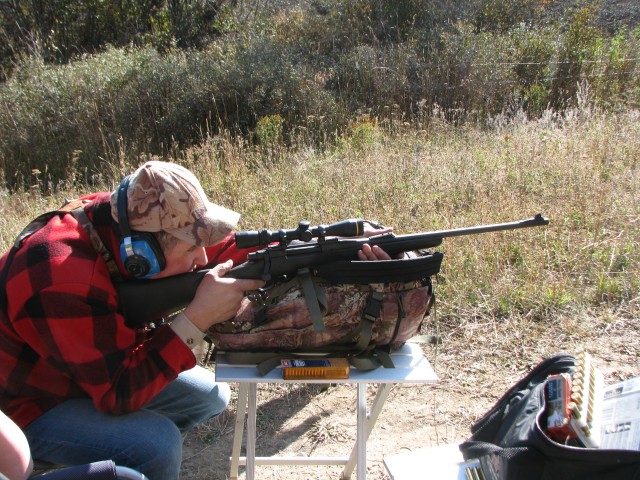“My Elk Rifle”


"Ol Meat in the Pot"
I like to refer to my old reliable Remington 700 BDL 338 Win Mag, as “Ol Meat in the Pot”. I know when she roars something is going to die! When I hold her in my embrace, it feels as if she is an extension of my own anatomy. This relationship was no one night stand, it was built on countless hours of carrying the gun (rain or shine) on many big game hunts, a few hundred rounds of ammo, and several years of wearing down the shiny blued finish and putting small dings in the stock. Its not as beautiful as it was the fist day that I took it home, but it is part of me. Over the years other rifles have caught my eye and I’ve tried to retire “Ol Meat in the Pot”, but I have yet to have one measure up to the connection we’ve made.
 Selecting a Scope
Selecting a Scope
Before you even begin to install your new scope, you must first make the right purchase. Always buying the very best optic within your budget is paramount in completing your accurate rifle. Even if you must save up for a couple of months extra to get the scope that will compliment your firearm perfectly, it is totally worth it. During the hunt is the last place you want to test out the so called “limited lifetime warranty”. A warranty is great, but if your bargain basement optic fails on the bull of a lifetime, its not worth the paper its printed on.
Mounting the Optic
The reliability of ones elk rifle comes by no mistake. Many detailed steps are taken to insure repeatable, accurate shot placement. This all begins at a sometimes overlooked crucial step – scope installation. Good quality scopes are no better than the mounting systems that hold them to your rifle. Much to many shooter’s chagrin, cheap or inappropriate rings and bases have left them chasing their tails trying to get their gun to shoot right, so proper mounting procedures come into focus.
For your general sporter rifle, putting lock tight on the small screws that hold the bases to the action, and the scope clamping ring caps in place, is a major step in making your setup bullet proof. You must also be sure that the rings are held perfectly in line front to back, so as to not distort the angle of the optic. The thickness of a human hair at the mounts translates to multiple minutes of angle on where your bullet’s point of impact will be. Long range shooters insist on the highest quality of mounts to hold their precision optics to their tactical rifles. They even go as far as to bed the bases to the rifle’s action with compounds such as JB Weld. Those 1000 yard shots that the pros can make, would never be possible without such details at ground zero. You must also be sure that the scope’s reticle is level with he action of the gun preventing any inaccuracy caused by “canting”.

"Practice makes perfect"
Sighting it in
Once we have our scope installed in our rock solid mounts it’s time to bore sight and then fling some lead. Zeroing the rifle in at 100 yards is fairly standard, with some of us putting the point of impact 1″-2″ high at 100 yards, for longer shots with less hold over. Next is ammo – if you buy low quality ammo then most likely you will have low quality performance. Just because you coughed up a ton of money for your rifle and scope, doesn’t mean you can cheap out on ammo. Spend a little extra and pick out premium ammunition. Regardless of brand most manufacturers use top notch bullets to match your caliber and deliver devastation to your target. Don’t take your elk-gun hunting if you’ve sighted it in with one kind of ammo, and then switched to something different for the hunt, without making sure the new ammo will impact the target within your 100 yard zero. Consistency is key to accuracy.
Last but not least, start shooting in the spring through summer and increase your efforts just before the opener. You will have the confidence to make that first shot count, and our quarry deserves nothing less.
The reward
Familiarize yourself with your rifle enough that when you raise it to shoot an animal, your brain and muscle memory go into auto pilot. All this attention to detail is well worth the effort and will draw you and your rifle close, and who knows, you may find a nickname for your new best friend. “I’d rather be lucky than good” is fine, but remember that “luck” is where opportunity and preparation meet at the same time. Be prepared and make that shot of a lifetime!

"Ol Meat In The Pot" strikes again!
